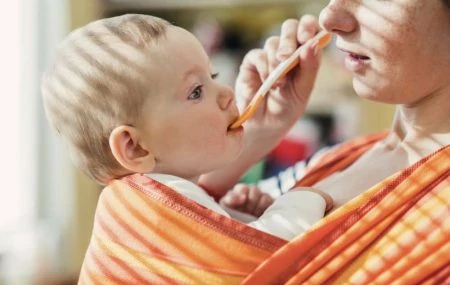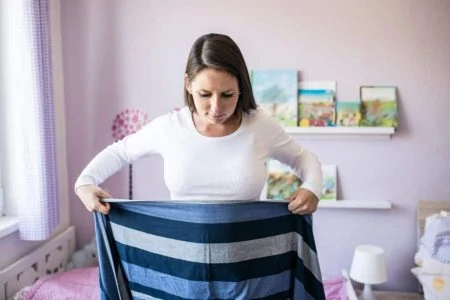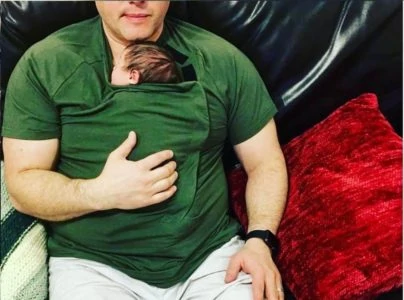While you want to get that spit-up out immediately, you also need to protect your investment. Baby carriers can be pricey, and improper washing can damage the structural integrity that keeps your little one safe.
In this guide, we will break down exactly how to clean every type of carrier, from structured packs to delicate ring slings. Let’s get that gear sparkling clean and safe for your next adventure.
Key Takeaways
- Consult the manual first: Always check your specific brand’s care label before washing, as instructions vary by fabric and model.
- Know your carrier type: Soft structured carriers, wraps, and ring slings all require different wash cycles and prep work.
- Choose the right soap: Use a gentle, liquid detergent free of optical brighteners, bleach, and enzymes (especially for silk or wool).
- Skip the heat: Always air dry your carrier to prevent shrinkage, buckle warping, and fabric damage.
How to Wash Different Types of Carriers
Not all carriers are created equal. A rugged canvas backpack requires a different approach than a delicate silk sling. Before you toss anything in the wash, identify your carrier type and check for specific “bits and pieces” like buckles or rings that need protection.
While each baby carrier brand has its own rules, here are the general best practices for the main styles.
1. Soft Structured Carriers (SSCs)
When most people think of babywearing, they picture an SSC. These are the workhorses of the carrier world, featuring padded straps, waistbands, and buckles. Brands like Ergobaby, Tula, and BabyBjorn fall into this category.
Because these carriers have structural components, you want to minimize tumbling.
- Prep the carrier: Fasten all buckles and velcro before washing. This prevents the plastic from banging around and breaking, and it stops velcro from snagging on the fabric.
- Spot clean first: You usually don’t need a full machine wash. Use a soft cloth, warm water, and mild baby laundry detergent to wipe down stains.
- Machine washing: If it needs a deep clean, put it in a pillowcase to protect the drum. Wash in cold water on a delicate cycle with mild detergent.
- Drying: Hang to dry in a well-ventilated area away from direct sun to prevent fading. Never put an SSC in the dryer, as heat can warp the buckles.
2. Wraps
A wrap carrier is essentially a long, specialized piece of fabric. Since there are no buckles or structured parts, the main risk here is tangling.
If you throw a long wrap loose into a washing machine, it will inevitably tie itself into a massive, wet knot.
- Contain the fabric: Place your wrap inside a mesh laundry bag or a pillowcase tied shut. This is non-negotiable for preventing tangles.
- Wash cycle: Use cold water on a delicate cycle with a gentle liquid detergent.
- Drying: Check the fabric content. Cotton wraps can often be tumbled on low, but air drying is safer to prevent shrinkage.
3. Mei Tais (Meh Dais)
A mei tai carrier offers a middle ground, featuring a structured panel for the baby but long fabric straps that you tie around your body.
Treat these similarly to a wrap carrier:
- Prevent tangles: Because the straps are long, you must wash the carrier inside a pillowcase or lingerie bag.
- The wash: Use cold water, delicate cycle, and mild detergent.
- Drying: Hang dry only. The padded panel may take longer to dry than the straps, so ensure it gets plenty of airflow.
4. Ring Slings
A ring sling is a long piece of fabric secured by two aluminum or nylon rings. The primary danger here is the heavy rings banging against the inside of your washing machine, which can damage both the machine and the rings.
Follow these steps to protect your gear:
- Protect the rings: Thread a sock over the rings and secure it with a hair tie or rubber band. This cushions them during the wash.
- Unthread the fabric: Make sure the tail is not threaded through the rings so the fabric gets fully cleaned.
- The wash: Wash in cold water on delicate with a small amount of liquid detergent (no optical brighteners).
- Finishing up: Air dry the sling. You may need to steam iron it afterward, especially if it is linen, to get the pleats to lay flat again.
Critical Factors: Fabrics and Detergents
Before you hit “start” on the washer, you need to know exactly what your carrier is made of. A wool blend requires a totally different approach than a sturdy cotton canvas.
1. Detergent Do’s and Don’ts
Your choice of soap is arguably the most important factor in extending the life of your carrier. Standard grocery store detergents are often too harsh for specialized babywearing fabrics.
Pro Tip
If you have a carrier made of animal fibers (wool, silk, cashmere), you must use a detergent free of enzymes. Enzymes are designed to eat biological stains, but they will also eat away at wool and silk fibers.
2. Cotton and Linen
These are the most common and durable fabrics.
- Washing: You can wash these alone in cold water on a delicate cycle.
- Drying: While durable, they are natural fibers and will shrink with heat. Line drying is always the safest bet. If the linen feels stiff after drying, a quick steam iron or “breaking it in” by wearing it will soften it up.
3. Bamboo Viscose
Bamboo is soft and breathable but incredibly absorbent and heavy when wet.
- Water exposure: Do not soak bamboo carriers for more than 40 to 50 minutes. The structure of the fiber weakens when waterlogged for too long.
- Handling: Never scrub or wring out bamboo fabric. Gently squeeze out water and lay flat to dry.
4. Wool and Cashmere
These are luxury fibers often found in high-end wraps. They are temperature-regulating but very sensitive to agitation.
- The danger: Agitation plus temperature changes equals felting. Once wool felts, it shrinks and loses its stretch permanently.
- How to wash: Hand-wash only in lukewarm water with a wool-specific wash (like Eucalan). Do not change water temperatures drastically.
- Drying: Roll the carrier in a dry towel and press down to remove excess water. Do not wring it! Lay flat to dry out of direct sun.
5. Silk
Silk is strong but requires gentle care to maintain its texture.
- Finish preference: If you want to keep the shine, spot clean or dry clean only. If you prefer a matte finish (and a softer feel), you can hand wash in cold water.
- The vinegar trick: Add a small splash of white vinegar to the rinse water to help soften the silk fibers.
- Reshaping: Silk shrinks easily. While it is still damp, gently stretch the width of the carrier back to its original size before letting it finish drying.
The Case for Air Drying
We cannot stress this enough: keep your carriers out of the dryer.
High heat destroys elastic, warps plastic buckles, weakens fabric fibers, and sets difficult stains. The dryer is the enemy of longevity. Always hang dry or lay flat indoors. Avoid drying in direct sunlight, as UV rays can fade those beautiful colors and degrade the fabric strength over time.
FAQs
In Conclusion
Keeping your baby carrier clean doesn’t have to be a headache. By following these simple rules, buckling up, using gentle soap, and skipping the dryer, you can keep your gear safe and comfortable for the long haul.When in doubt, always spot clean first. Your carrier supports your most precious cargo, so a little extra care goes a long way in ensuring it stays strong for all those future snuggles.











